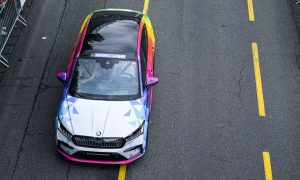
Placing safety at the forefront of its ambitions, Nissan continues to push the limits to reduce the occurrence of deaths from accidents involving Nissan vehicles, including EVs.
In November 2021, Nissan unveiled Nissan Ambition 2030, its long-term vision for empowering mobility and beyond for a cleaner, safer and more inclusive world. Ensuring each vehicle, including the Ariya, Nissan’s all-electric crossover is subject to rigorous crash testing to meet the highest safety standards in the event of a collision is vital to achieving this goal.
At the Nissan Technical Centre in Atsugi, Japan, a highly trained team of engineers puts Nissan’s flagship EV through hundreds of extensive tests including frontal-side- and rear-impact collisions, as well as those that simulate accidents when pedestrians are on the road. All needing as little as 1/1000th of a second to ensure the Ariya meets the stringent standards Nissan has set for itself.
“More than 100 data points are evaluated on the Ariya,” said Gen Tanabe of the Passive Safety Evaluation Group. “Because the upcoming Ariya will be sold in many markets, we will conduct more than 400 tests from the early stages of development to market launch.”
Results reveal that the Ariya’s body and unique cabin structure, make it possible to absorb a variety of impacts offering superior protection for drivers and passengers.
Engineers from Nissan’s Passive Safety Evaluation Group measure the force of potential impact on the vehicle’s body and structural components, as well as its effects on the driver and passengers via test dummies of various sizes and body types equipped with multiple sensors that record simulated injury levels to vital areas of the body.
Leveraging Nissan’s extensive know how in electric mobility from over the past decade, many of the testing procedures employed for the Nissan LEAF have been adapted for the Ariya, allowing Nissan to set its own safety standards – often more comprehensive than those required by regulators. For example, because Ariya’s EV battery pack is high voltage, the safety engineers needed to ensure it retained its structural integrity in the case of a crash without the electrodes leaking.
Serving as the basis for developing safer vehicles, Nissan’s safety proposition includes active and passive safety measures to support the safety of vehicle occupants in a variety of scenarios. The overall goal is to prevent collisions where possible and, in case of unavoidable collisions, mitigate damage and injuries.



